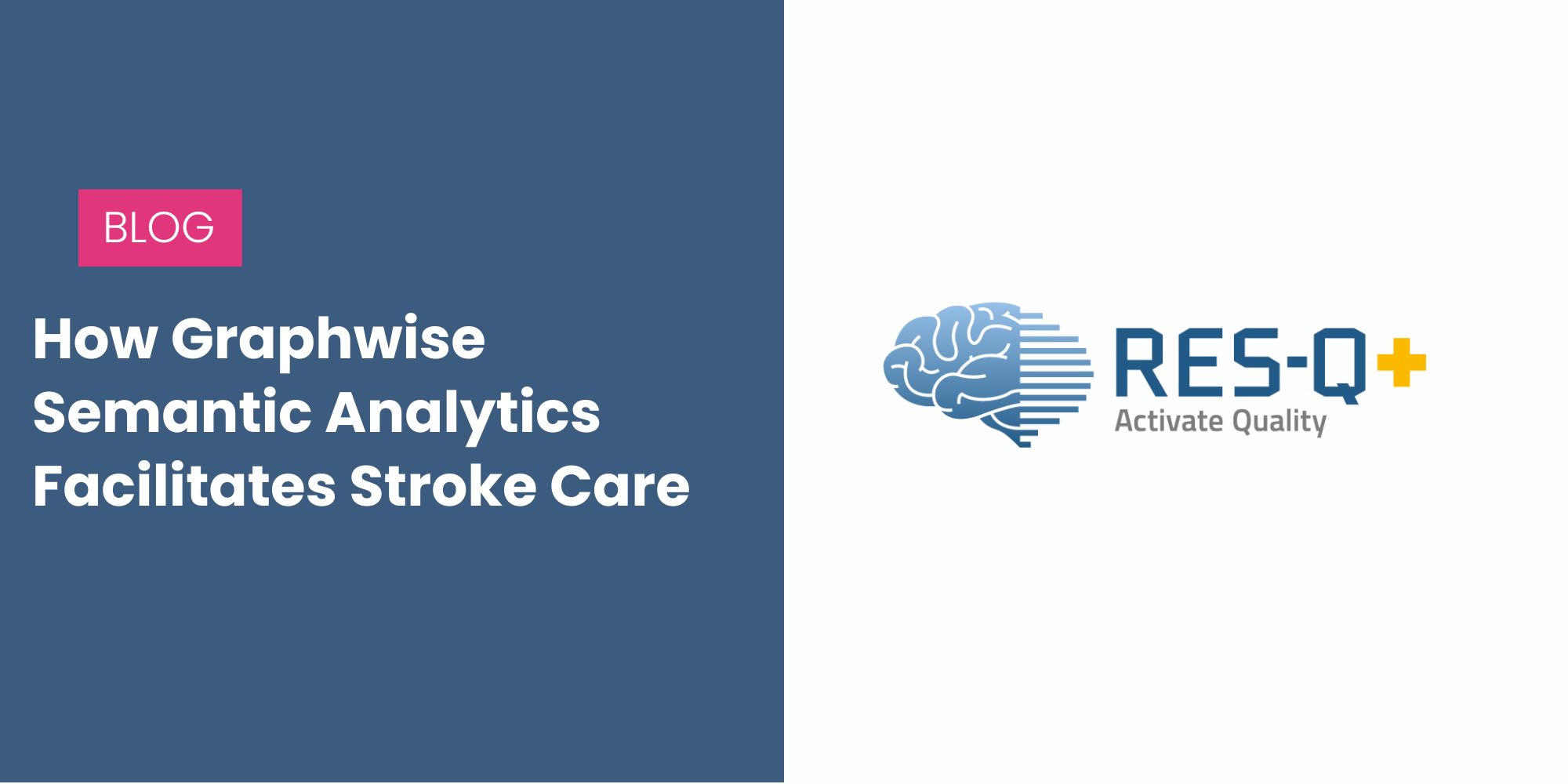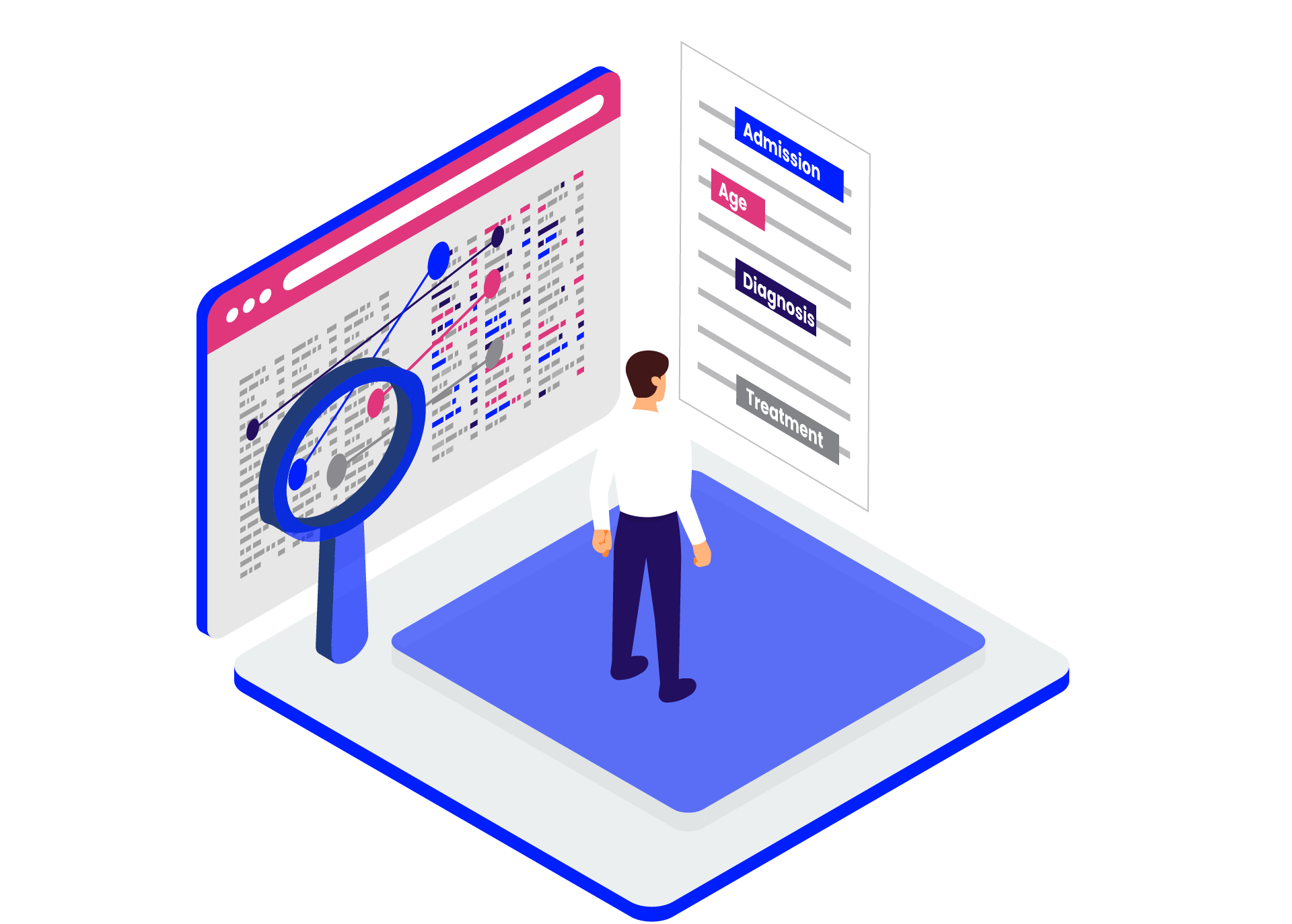Our technologies enable medical experts from 7 European countries to input data faster into the Registry of Stroke Care Quality (RES-Q)

Entering data manually into registries takes a lot of time and effort for medical staff who could otherwise be helping patients. Manual data entry also often leads to incorrect or incomplete data due to clinicians’ heavy workload.
The RES-Q PLUS project aims to automate data processing for the Registry of Stroke Care Quality (RES-Q) as much as possible. This registry collects clinical data about stroke patients worldwide and supports data analysis, pattern recognition, and overall treatment improvement.
Transforming multilingual medical data
One of Graphwise’s contributions to the RES-Q PLUS project is to develop a functionality for quickly ingesting validated information from discharge letters for stroke patients across Europe. This needs to cover 7 languages – English, Spanish, Czech, Greek, Polish, Romanian, and Bulgarian.
To accomplish this, healthcare teams need a streamlined tool that could efficiently transform unstructured medical text into structured, high-quality data, aligned with the RES-Q data model. By automating portions of the annotation process and making human validation easy, the project improves data quality and consistency across languages. This speeds up the flow of essential patient information into the RES-Q registry.
Overcoming complex data entry obstacles
The main challenge of automating data processing is extracting and reconciling data from discharge documents across 7 European languages and aligning it with the complex RES-Q data model. The solution needs to support multilingual text extraction, while allowing medical doctors to validate data quickly and easily within the familiar RES-Q questionnaire structure.
Doctors perform these annotations alongside their clinical work and often need to pause abruptly to attend to stroke patients. So, the system must save their progress and allow them to resume seamlessly. With 300 documents per language and over 150 data points per document, the solution needs to enable fast, intuitive data entry without overwhelming medical professionals.
Also, documents from different countries, hospitals and even doctors vary in structure and wording, which makes automated extraction of relevant data points difficult.

The Solution: A Phased Approach to Automation
The project addresses the complex requirements of annotating medical discharge letters in multiple European languages through three phases. It uses Graphwise Semantic Analytics (former Metadata Studio) and GraphDB as core technology enablers, with customized Extract, Transform, Load (ETL) processes and programming interfaces managing data flow.
Phase 1: Manual Annotation and Training Data Generation
This phase of the project focused on manual annotations to produce high-quality training data for fine-tuning automated multilingual extraction. Medical doctors across Europe used a split-screen view showing the RES-Q form questions alongside the document, both in their native languages. This enabled efficient extraction and structuring of unstructured medical text. The user-friendly interface supported quality control by letting doctors select concepts from a controlled vocabulary, ensuring consistency and accuracy in data entry.
Phase 2: ML-Powered Pre-filling with Human Validation
The next phase introduced a multilingual text analytics pipeline based on machine learning models trained on Phase 1 data. Graphwise and our Czech partner, Charles University, developed these services.
The annotation workflow changed significantly as this pipeline automatically pre-fills the RES-Q form with the information extracted from the documents. Clinicians then validate the generated annotations and correct them if needed. Graphwise Semantic Analytics allows users to override automatic annotations and confirm model suggestions, which also provides feedback for improving the machine learning models. Completed and validated forms are then securely submitted to the RES-Q registry with all data handling following strict privacy standards.
Phase 3: High-Accuracy Automation with Minimal Review
The final phase is planned for when the machine learning models become mature enough to provide high-quality annotations that extract the most relevant textual parts from the discharge reports. Since we cannot expect absolute accuracy of the models and cannot submit wrong data to the RES-Q registry, humans still need to verify the generated annotations. At this stage, the number of wrong or missed data points should be low enough to significantly reduce the time for document entry compared to the current RES-Q registry interface.
To wrap it up
Graphwise semantic analytics and machine learning capabilities are a key part of the end-to-end solution that streamlines the extraction of RES-Q-specific data from unstructured medical discharge letters across multiple European languages and medical practices. The standardized semi-automated workflow with built in quality enhancement features ensures faster turnaround time for data ingestion into the RES-Q registry, while maintaining compliance with legal and medical standards.
Reducing the burden of data entry not only relieves clinicians but also ensures more complete data entry, decreases healthcare costs through higher efficiency, and ultimately saves patient lives by improving stroke care.
Want to see more about Graphwise’s offerings in action in Healthcare?

The RES-Q PLUS project has received funding from the European Union’s Horizon Europe research and innovation programme under grant agreement No:101057603. Views and opinions expressed are however those of the author only and do not necessarily reflect those of the European Union. Neither the European Union nor the granting authority can be held responsible for them.




